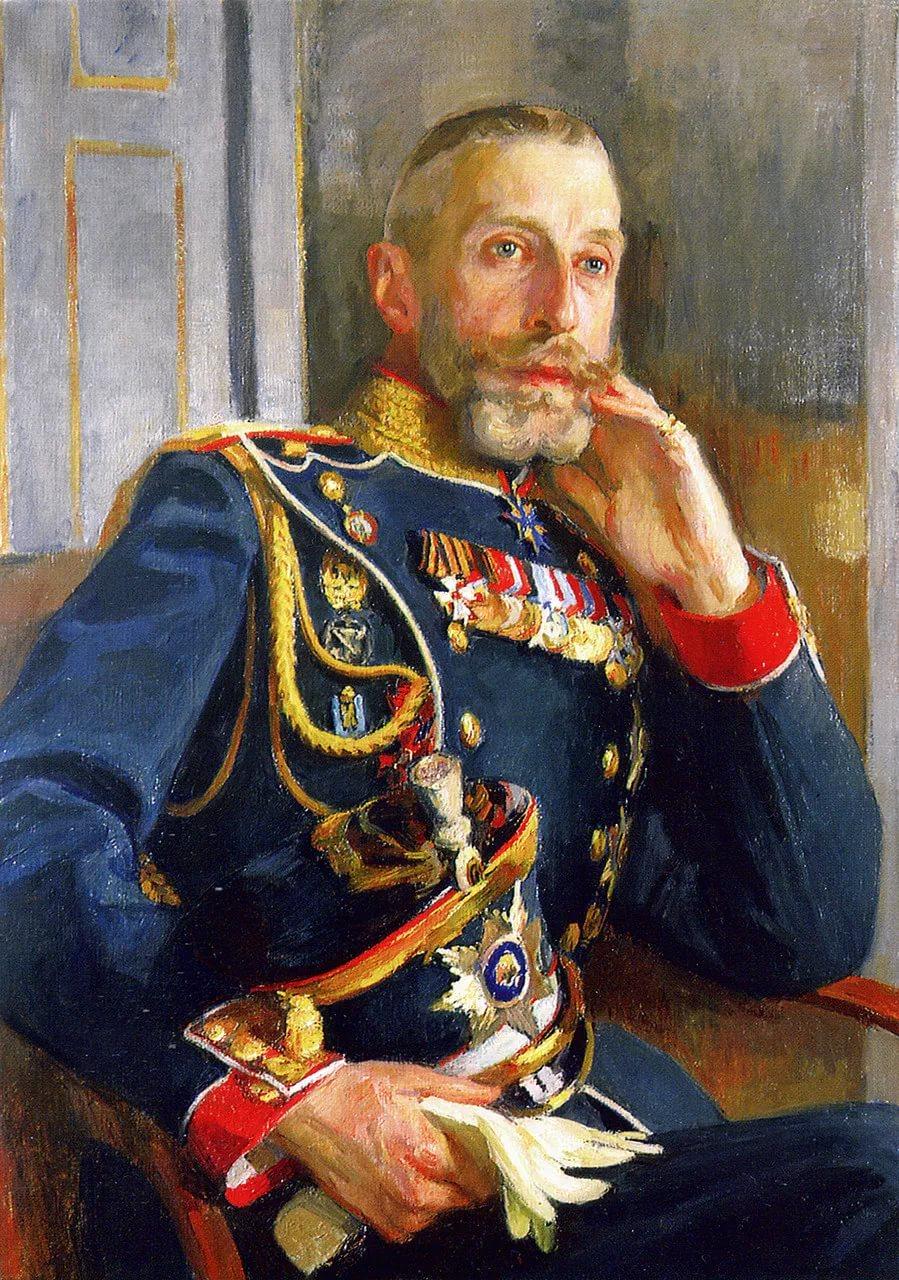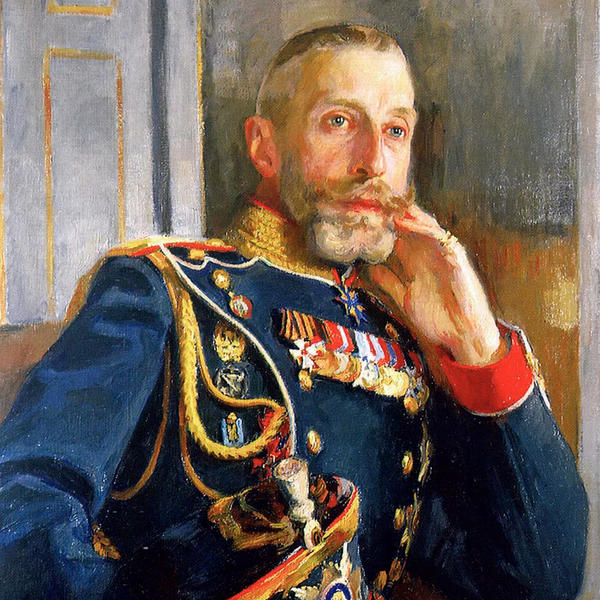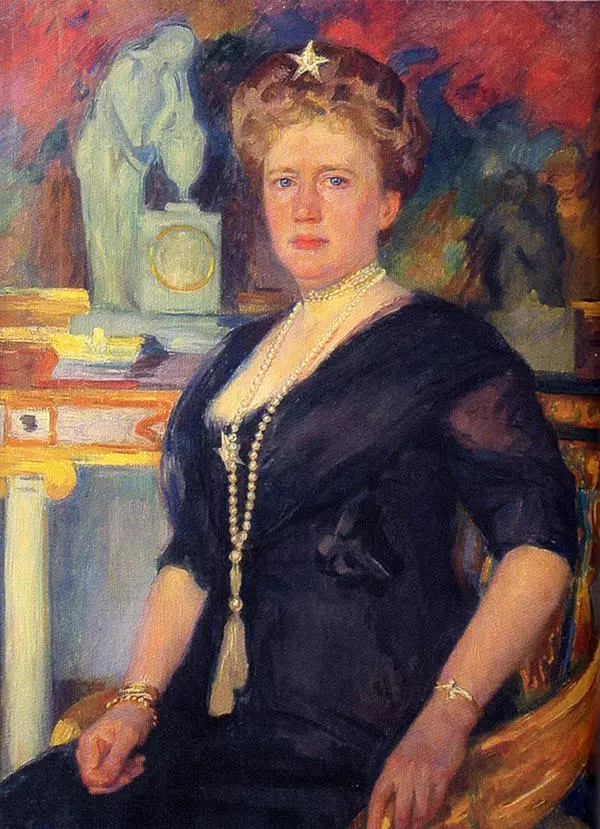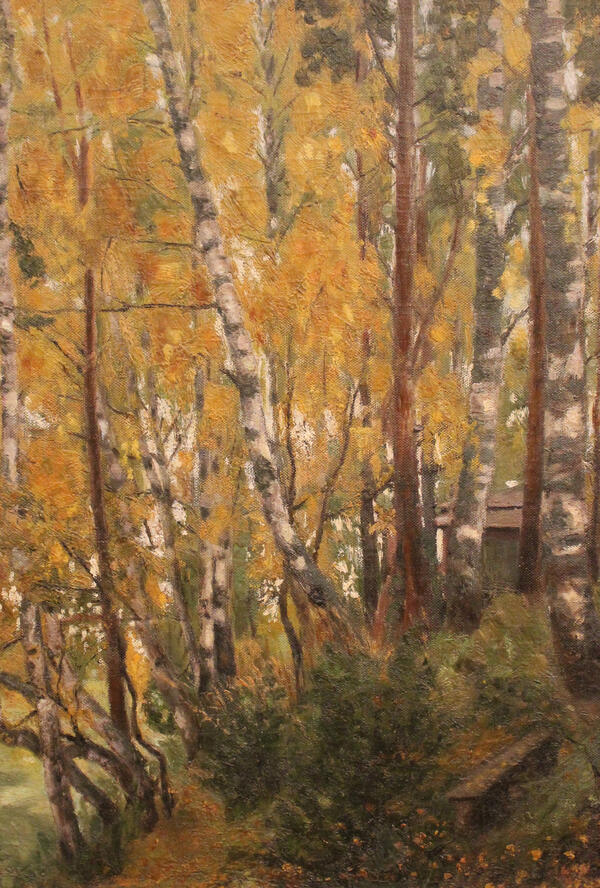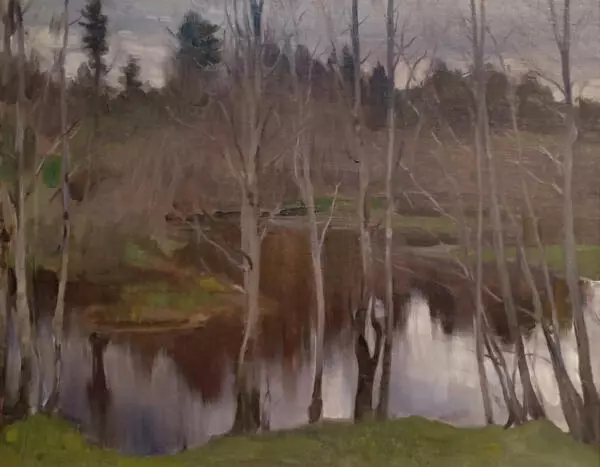The portrait shows Konstantin Konstantinovich Romanov, grandson of Emperor Nicholas I. The grand duke ordered to have his portrait painted as a present for his son Oleg coming of age in 1912. The portrait was painted by Russian artist Osip Braz. In his paintings he was reviving the traditions of a ceremonial portrait. Canvases of this genre were ordered by members of the Royal family and nobility. Such pictures were meant to emphasize the social standing, status, achievements and merits of painters’ heroes. Trapping also figured prominently: fluffy dresses and sophisticated interior details, parade dress uniforms and regalia.
Portrait of Grand Duke K. Konstantinovich
Время создания
1912
Размер
68,5x48,8 cm
Sverdlovsk State Regional Ethnography Museum
Sverdlovsk State Regional Ethnography Museum
Техника
Replication
2
Открыть в приложении#1
Braz O.E.
Portrait of Grand Duke Konstantin Konstantinovich
#7
#8
Braz depicted Konstantin Konstantinovich in his military uniform with military orders awarded to the grand duke for his military feats.
#9
Bright tones employed by the artist also emphasize the ceremonial nature of the portrait.
Konstantin Konstantinovich was brought up in an aristocratic family. From early childhood the grand duke was taught various subjects to prepare him for serving in the Navy. His father, Konstantin Nikolaevich, was a general admiral and wanted his son to make a brilliant military career. His first sea voyage was on board the frigate Gromoboy, where he was sent for his marine practice. He was a bit over 10 years old at that time.
Konstantin Konstantinovich was brought up in an aristocratic family. From early childhood the grand duke was taught various subjects to prepare him for serving in the Navy. His father, Konstantin Nikolaevich, was a general admiral and wanted his son to make a brilliant military career. His first sea voyage was on board the frigate Gromoboy, where he was sent for his marine practice. He was a bit over 10 years old at that time.
In 1876 the grand duke passed midshipman but for health reasons was later transferred from the Navy to the Imperial Guards. Later on, he was involved in the supervision of training for future military officers as the Chief of military educational establishments.
#10
However, for many years his main passion was literature. He wrote poems. His first book of poems came out with the author’s signature K.R.: the readers in the know realised that it stood for Konstantin Romanov. The number of copies printed was insignificant. All books were given as gifts to family and friends.
The grand duke’s pieces appealed to readers and the second edition had a large circulation. It included about 80 poems of different years. Not only did he write poems but Konstantin Konstantinovich had a brilliant command of foreign languages and translated foreign authors − Friedrich von Schiller and Johann Wolfgang von Goethe. He became one of the best pre-revolutionary translators of William Shakespeare’s tragedy Hamlet.
#6
After the outbreak of World War I, all the five sons of the grand duke were sent to the front – the Konstantinovich dukes as they were dubbed: Joannes, Igor, Konstantin, Gavriil and Oleg. His closest son Oleg was badly wounded in action and died in 1914. He was buried in the Ostashevo family estate. The loss of his favourite son undermined the health of the grand duke. He died a year later.
Prince Oleg Konstantinovich of the Blood Imperial. Source: commons.wikimedia.org
читать дальшескрыть
00:00
00:00
1x
Portrait of Grand Duke K. Konstantinovich
Время создания
1912
Размер
68,5x48,8 cm
Sverdlovsk State Regional Ethnography Museum
Sverdlovsk State Regional Ethnography Museum
Техника
Replication
2
Открыть в приложении
Поделиться
